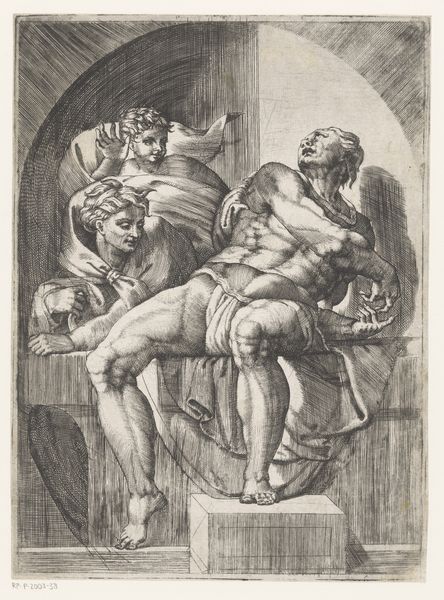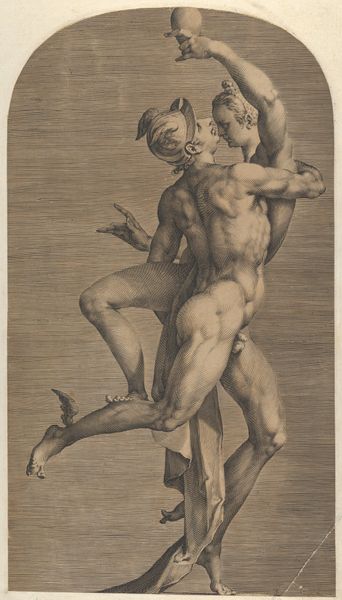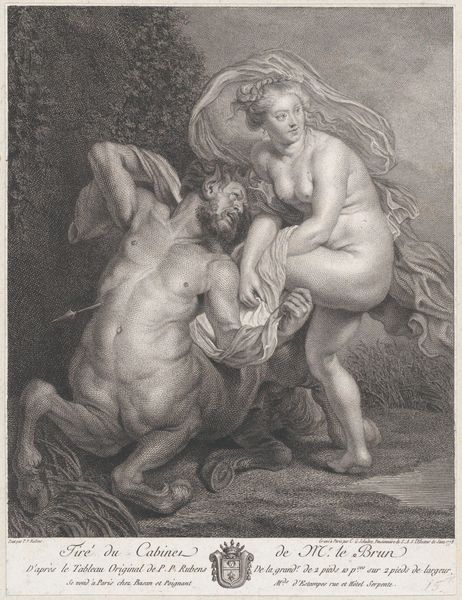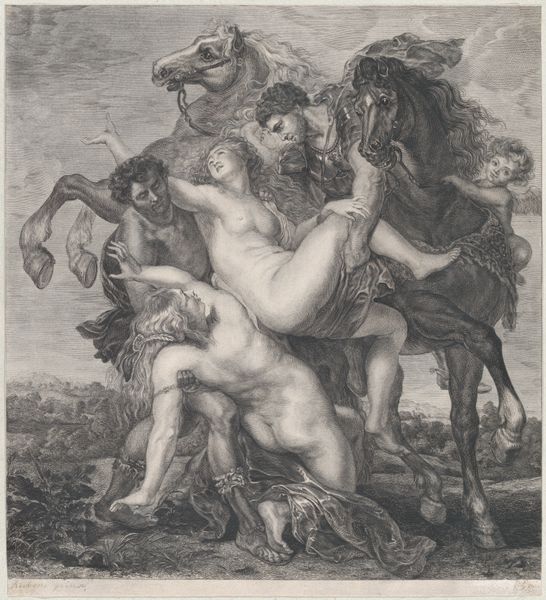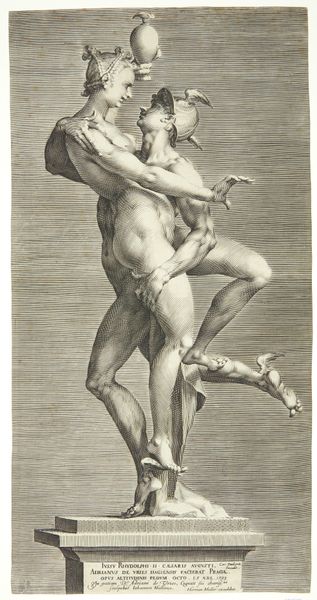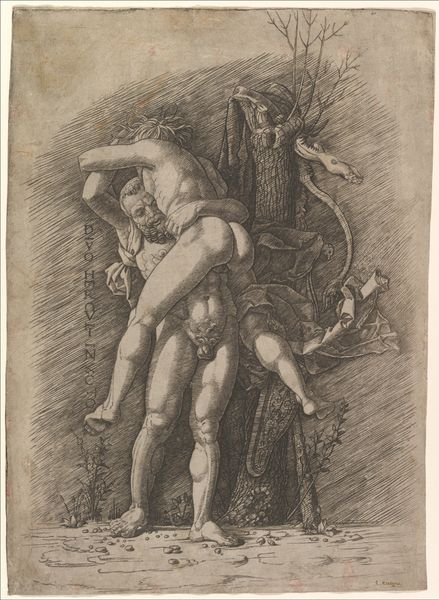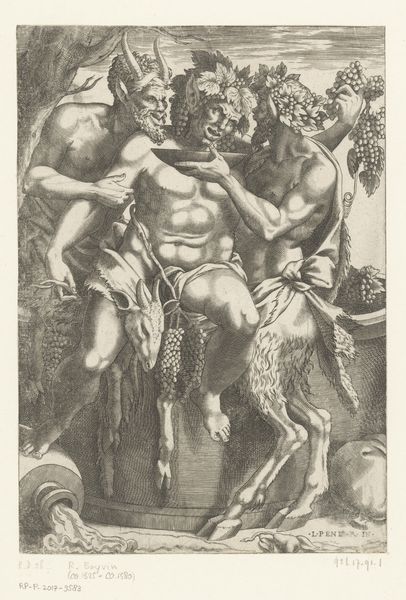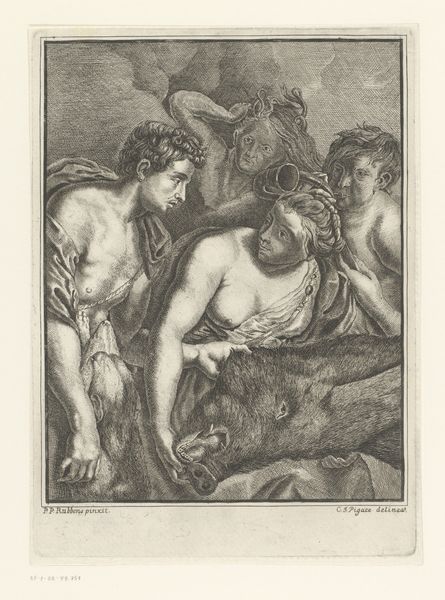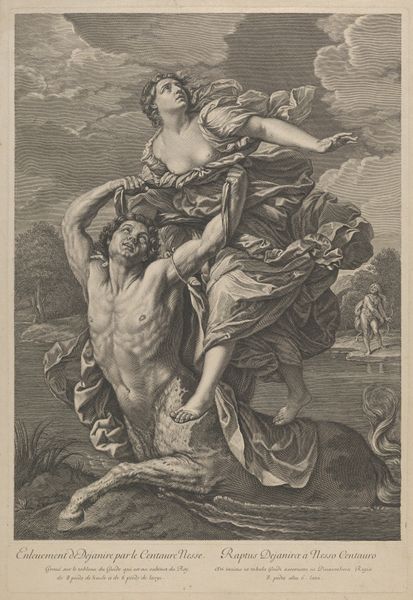
Deianeira receiving the poisoned tunic from Nessus, and the wounded centaur falling to the ground at left 1645 - 1705
0:00
0:00
drawing, print, engraving
#
drawing
#
baroque
# print
#
figuration
#
surrealism
#
history-painting
#
nude
#
engraving
Dimensions: Sheet (Trimmed): 13 1/16 × 8 13/16 in. (33.1 × 22.4 cm)
Copyright: Public Domain
Curator: Before us, we have a striking engraving, "Deianeira receiving the poisoned tunic from Nessus, and the wounded centaur falling to the ground at left," created between 1645 and 1705 by an anonymous artist. Editor: My initial reaction is one of intense physicality. The tension in the centaur’s body, the implied weight of Deianeira—it’s palpable even in this black and white rendering. Curator: Indeed. The anonymous artist masterfully employs line and shadow to depict the dramatic interaction. Let’s not forget the Baroque love of the dramatic gesture. Nessus appears to be succumbing to the arrow wound, Deianeira to the weight, while a theatrical drapery amplifies the scene. The narrative centers on the treacherous gift, where Nessus deceives Deianeira with the promise of a love potion, actually poisoned blood. Editor: I see it as more than just a cautionary tale about trusting dubious gifts. Deianeira's complicity, even ignorance, is telling of the societal traps set for women. The "gift" becomes a symbol of manipulative patriarchal control. Look how vulnerable she is, draped but exposed. What's especially insidious, is the wounded Centaur, himself a figure of problematic masculinity, is centered in this act of further betrayal. The image raises interesting questions of gender and power within that period, wouldn't you agree? Curator: Perhaps. But it's undeniable the artist, whoever they may be, used classical mythology as the very scaffold. Note how skillfully they utilize the conventions of history painting; to impart an undeniable sense of significance. The clean lines, sharp detail – notice how clearly defined the musculature of Nessus is and even the fabric of the cape looks lifelike, it's a compelling interplay of light and dark. The linear precision elevates it beyond mere narrative to something altogether more timeless and archetypal. Editor: It transcends time, certainly, because these power dynamics sadly remain recognizable. Consider the artwork’s relevance in discussions around consent, manipulation, and weaponized gifts. Even Nessus himself – is he entirely unsympathetic, a victim of his base desires and painful injury? Curator: Intriguing thought, but one has to appreciate how skillfully it utilizes Mannerist ideals to show it. Editor: Well, regardless of our perspective, the anonymous artist presents a rich ground for consideration. Curator: Yes. It leaves us contemplating not just artistic prowess but human foibles across time.
Comments
No comments
Be the first to comment and join the conversation on the ultimate creative platform.
